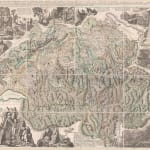▪ Austria & Switzerland
- All
- Christmas Gift Ideas
- AFRICA
- ▪ Central Africa
- ▪ East Africa
- ▪ North Africa
- ▪ Southern Africa
- ▪ West Africa
- ▪ Atlantic Islands
- AMERICAS
-
▪ United States (USA)
- USA - East
- USA - Midwest
- USA - Northeast
- USA - Southeast
- USA - West & Southwest
- Alabama
- Alaska
- Arizona
- Arkansas
- California
- Colorado
- Connecticut
- Delaware
- Florida
- Georgia
- Hawaii
- Idaho
- Illinois
- Indiana
- Iowa
- Kansas
- Kentucky
- Louisiana
- Maine
- Maryland
- Massachusetts
- Michigan
- Minnesota
- Mississippi
- Missouri
- Montana
- Nebraska
- Nevada
- New Hampshire
- New Jersey
- New Mexico
- New York
- New York City
- North Carolina
- North Dakota
- Ohio
- Oklahoma
- Oregon
- Pennsylvania
- Rhode Island
- South Carolina
- South Dakota
- Tennessee
- Texas
- Utah
- Vermont
- Virginia
- Washington
- Washington, D.C.
- West Virginia
- Wisconsin
- Wyoming
- ▪ North America
- ▪ South America
- ▪ Caribbean
- ASIA
- ▪ East Asia
- ▪ Southeast Asia
- ▪ India & South Asia
- ▪ Middle East & Turkey
- BRITISH ISLES
- ▪ London
-
▪ England
- English Cities
- Bedfordshire
- Berkshire
- Buckinghamshire
- Cambridgeshire
- Cheshire
- Cornwall
- Cumbria
- Derbyshire
- Devon
- Dorset
- Durham
- Essex
- Gloucestershire
- Hampshire
- Herefordshire
- Hertfordshire
- Huntingdonshire
- Isle of Wight
- Kent
- Lancashire
- Leicestershire
- Lincolnshire
- Middlesex
- Norfolk
- Northamptonshire
- Northumberland
- Nottinghamshire
- Oxfordshire
- Rutland
- Shropshire
- Somerset
- Staffordshire
- Suffolk
- Surrey
- Sussex
- Warwickshire
- Wiltshire
- Worcestershire
- Yorkshire
- Yorkshire East Riding
- Yorkshire North Riding
- Yorkshire West Riding
- ▪ Ireland
- ▪ Scotland
- ▪ Wales
- EUROPE
- ▪ Austria & Switzerland
- ▪ Benelux Region
- ▪ Central & Eastern Europe
- ▪ France & Monaco
- ▪ Germany
- ▪ Greece
- ▪ Italy
- ▪ Mediterranean Sea
- ▪ Spain & Portugal
- ▪ Scandinavia & Baltics
- ▪ Russia, Ukraine & Caucasus
- OCEANIA
- ▪ Australia
- ▪ New Zealand
- ▪ Pacific Ocean & Islands
- ▪ Papua New Guinea
- POLAR
- CELESTIAL
- WORLD
- GLOBES & INSTRUMENTS
- THEMATIC
- COLLABORATIONS
Johann Jakob Scheuchzer
115 x 150 cm
When this map was published in 1712, Switzerland was in the midst of a religious civil war, the Toggenburg War, which lasted from April to August, 1712. It was a conflict between Catholic and Protestant cantons for hegemony over Switzerland and ended with a Protestant victory and the guarantee of religious freedom and equality in the eyes of the law, finally ending Catholic preference in Switzerland. Unsurprisingly, the map specifically denotes which cities, towns, and villages were Catholic or Reformed Protestant. Castles, monasteries, and mountain passes are also marked on the map, following a legend in the lower-left corner. Each canton is outlined on the map, coloured, and labelled with its coat of arms to distinguish it from its neighbours.
Perhaps the most arresting feature of this map are the substantial and elaborate cartouches which surround the map on all sides. In the top-left corner is the map's title around which are arranged a series of allegorical figures representing the rivers of Switzerland, including the Rhine, the Rhone, and the Danube. Beside them are a farmer, some cattle, and various machines and instruments for making cheese and butter. Below the river figures is a view of the Teufelsbrücke, or Devil's Bridge, and the Schöllenen Gorge.
The bottom-left corner has the map's legend and an illustration of the famous Gemmi Pass across the Bernese Alps, along with other natural phenomena, such as a circular rainbow at the bottom of a waterfall and the Rhone glacier. Most curious of all is a depiction of the Dragon of Lucerne, a mythical beast believed to live in the mountains surrounding Lucerne, occasionally leading to the disappearances of livestock and even local farmers.
The top-right corner displays workers cutting sod alongside what appears to be a tidy vineyard. There is also a list of the ancient names for various Swiss towns, and a collection of fossils, all drawn from real specimens collected by Scheuchzer on his travels. The bottom-right cartouche is the simplest, but no less interesting as a result. It focuses on natural phenomena found in the Alps, including ball lightning, severe floods, and double rainbows. These were all phenomena described by Scheuchzer in his work Beschreibung der Natur-Geschichten des Schweizerlands, a natural history of Switzerland.
Original hand-colour. [SWAS1554]
- X
- Tumblr
Join our mailing list
* denotes required fields
We will process the personal data you have supplied to communicate with you in accordance with our Privacy Policy. You can unsubscribe or change your preferences at any time by clicking the link in our emails.
Contact
The Map House
54 Beauchamp Place,
London SW3 1NY,
United Kingdom
maps@themaphouse.com
+44 (0)20 7589 4325

This website uses cookies
This site uses cookies to help make it more useful to you. Please contact us to find out more about our Cookie Policy.
Join our mailing list
* denotes required fields
We will process the personal data you have supplied to communicate with you in accordance with our Privacy Policy. You can unsubscribe or change your preferences at any time by clicking the link in our emails.




